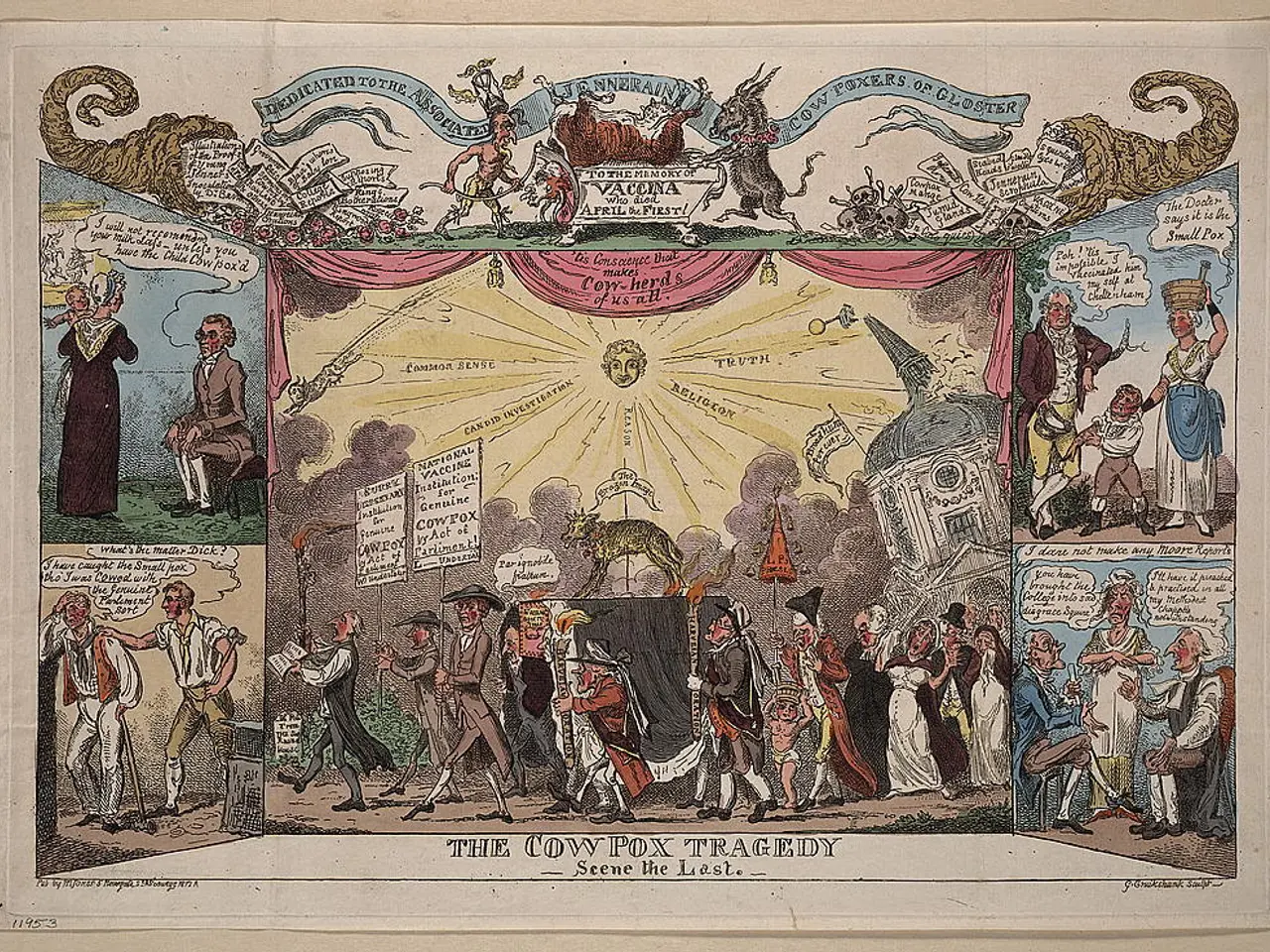Emerging Satanic Group's Possible Impact on Political Shifts?
The Satanic Temple (TST), a satanic political movement that emerged in 2013, is making waves in the political landscape. With a stated goal to inspire a 'satanic revolution' and challenge the popular belief that America is a 'Christian nation', TST sees itself as the heir to the "New Left" of the 1960s.
TST has gained significant attention for its political campaigns, primarily advocating for social justice issues such as reproductive rights. The group has effectively used media attention and public spectacle to further its agenda, employing provocative, symbolically charged campaigns that generate widespread coverage.
One of their most notable campaigns was 'The Sabbat Cycle', a collaboration with A24 studios, which included screenings of Robert Eggers' period horror film 'The Witch' followed by politically driven satanic rituals. In Austin, Texas, Jex Blackmore, a spokeswoman for TST, interpreted 'The Witch' as a depiction of a satanic revolution driven by patriarchal oppression.
During these events, TST used various tactics to make their message heard. For instance, a speaker played an excerpt from a Baptist pastor's warning about Satan using people's pride and selfish desires against them. However, TST interpreted this as a representation of moral autonomy and personal responsibility.
The media coverage these campaigns attract helps amplify their message, pressure policymakers, and encourage public discourse on secularism and individual rights. TST has also made a significant impact by raising public awareness around reproductive rights, providing direct support to members through initiatives like the Satanic Abortion Ritual and a clinic prescribing abortifacients, and engaging in legal and political activism aimed at securing rights often restricted by dominant religious frameworks.
TST believes that the separation of church and state is currently under attack by radical religious conservatives. To combat this, they have launched campaigns demanding the same religious rights and privileges afforded to Christianity. This includes creating satanic coloring books for distribution in schools and bidding to erect satanic 'nativity scenes' on government property. TST has even threatened to sue the Phoenix City Council if they are not included in public prayers offered before their council meetings.
With over 17 chapters in the United States and Europe and an estimated 100,000 members, TST is a growing movement. However, not everyone is convinced of its viability. Supporters like Jonathan remain skeptical, while others are attracted to Satanism because it values knowledge over dogma. Despite the skepticism, TST continues to push the boundaries and challenge the status quo, advocating for religious pluralism, individual freedoms, and separation of church and state.
Jonathan, a witch attendee, shared his experiences of being targeted and persecuted for his Pagan beliefs, including an attempt to commit him to a mental institution. His story underscores the importance of TST's mission to protect individual rights and challenge religious imposition in public policy.
In conclusion, The Satanic Temple is a movement that is not afraid to challenge the norm and push for change. Whether you agree with their methods or not, it is undeniable that they are making a significant impact on the political landscape, particularly in the realm of reproductive rights and the separation of church and state.




